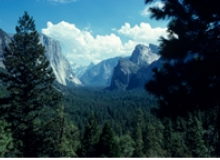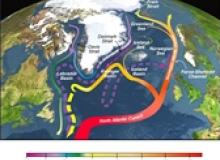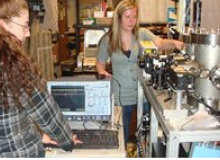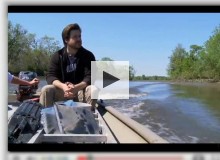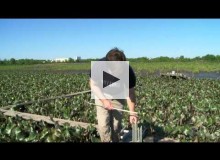National Science Foundation
National Science Foundation
Studies done by Mark Lusk and colleagues at the Colorado School of Mines could significantly improve the efficiency of solar cells. Their latest work describes how the size of light-absorbing particles--quantum dots--affects the particles' ability... Read More
National Science Foundation
The University of Minnesota's Center for Distributed Robotics is developing an amphibious robotic system, the Aquapod, to monitor the impact of oil on swamps and marshland.
Robust, highly mobile amphibious robots have the potential to assist... Read More
National Science Foundation
Electric vehicles are here to stay. With that being said, how will EVs engage more drivers while increasing efficiency? This study revealed that smaller battery packs in EVs are much more cost-effective and environmentally-friendly than larger, more... Read More
National Science Foundation
Mixed prairie grasses, grown on degraded land, may be a better source of biofuel than corn ethanol or soybean biodiesel. The study, led by David Tilman at the University of Minnesota, showed that fuel made from prairie grass yields 51 percent more... Read More
National Science Foundation
Many species of mammals in Yosemite National Park have shifted their home ranges to higher elevations over the last hundred years. A research team led by Craig Moritz at the Museum of Vertebrate Zoology of the University of California, Berkeley,... Read More
National Science Foundation
Over time, warming events in Greenland and the North Atlantic were followed by gradual cooling. These changes correlate well with the concentration of nitrous oxide found in ice core samples. Antarctic temperature variations, on the other hand, were... Read More
National Science Foundation
By modeling designs after concepts found in nature, engineers hope to create stronger buildings and more efficient innovations. Something as simple as flapping wings provides researchers with new insight into energy sources and its use.
National Science Foundation
Researchers have developed a new way to monitor organic aerosols (OA)--a sizable class of atmospheric aerosols, which exert a strong impact on climate as well as human health. Aerosols are tiny particles suspended in the air.
The new measurement... Read More
Planet Forward
A rising tide may lift all boats, but what does it do to marshlands? In this week's WEBISODE we showcase NSF funded scientist's work on how marshes are affected by sea level rise. We also take you on a trip halfway around!
National Science Foundation
Villanova University marine scientist Nathaniel Weston studies how both land use and climate change can impact habitat in tidal marshes, including how rising sea levels may affect microbes and other plants and animals.





